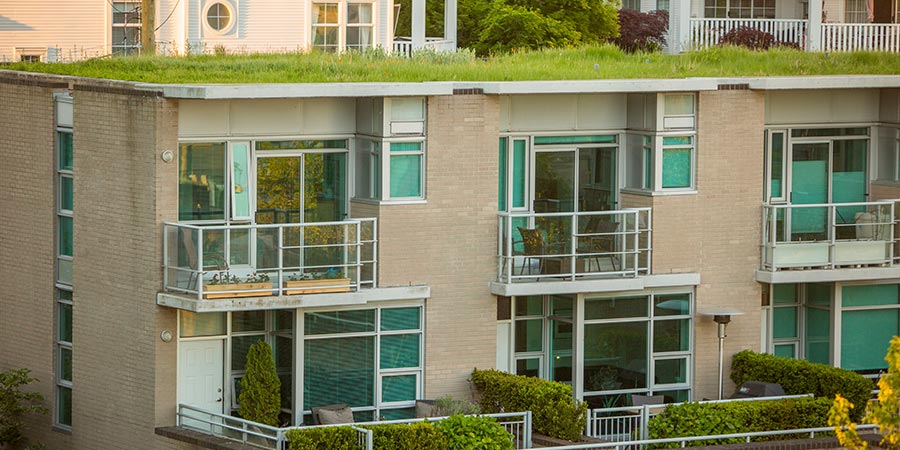How green roofs cool urban heat islands

You may have heard of the term "urban heat island." It's really just a fancy way of saying that, in certain areas of a city, heat energy concentrates to raise the temperature.
Cities are, for the most part, manmade and thus don't possess the same characteristics to dissipate heat that naturally forming structures and ecosystems enjoy. Typical cities, for instance, don't grow as much vegetation, which provides shade and the cooling effect of evapotranspiration. The materials that constitute a city—concrete, asphalt, etc.—absorb more of the sun's solar energy. They heat up and warm the air around them. The very geometry of most cities is unnatural. These materials that don't dissipate heat very well, also bounce short-wave radiation between the relatively close, tall buildings. And remember: these buildings are filled with people. Anthropogenic heat emissions from heating and air conditioning units, other electrical use, etc. contribute to warmth in the surrounding air. Clear skies and calm winds will only amplify these effects in an urban heat island (UHI).
What can be done to lower these heat elevations? We can't raze the city and start from scratch. We also can't ignore the heightened heat index either.
According to the US Environmental Protection Agency (EPA), elevated summertime temps increase energy demand for cooling. This can lead to rolling brown- or blackouts. The higher energy consumption also leads to more burning of fossil fuels, which release air pollutants and greenhouse gas emissions into the atmosphere. Heightened temperatures can also result in the formation of ground-level ozone, an unhealthy concoction of noxious gases.
What we can do is adapt.
Green roofs, a growing trend all over the world, are one of the most comprehensive answers to alleviate heat from UHIs. They can grow, flourish atop city roofs and bring the temperature down in the following ways:
- Evapotranspiration: Green roofs combine plants' power of transpiration—the process of moving water up from roots to pedals and leaves—and evaporation—conversion of water from liquid to gas—to remove heat from the air. The water sucks up heat energy as it evaporates from plants and soil (growing medium) into the now cooler atmosphere.
- Green roofs, soaked and swollen like a sponge after a rainstorm, store large amounts of heat in the retaining water. The heavy moisture regulates temperature fluctuations.
Find a good liquid waterproofing solution for your next green roof project
- Green roofs, when dry, act as an insulator, decreasing the flow of heat through the roof. Less heat thus escapes from the building into the air.
- Green roofs provide additional benefits, filtering storm runoff and absorbing pollutants like CO2. If you think about it, reducing CO2 in the air also reduces heat (global warming) in the long run. The absorptive quality of a lush green roof also acts as an effective sound barrier for noisy city streets.
- Furthermore, green roofs can optimise the performance of rooftop solar panels. According to livingroof.org, the cooling effect of a green roof keeps the surrounding air around panels at a temperature within which the photovoltaics can operate most efficiently.
標籤 (Tags)
- Silcor®
- Waterproofing
